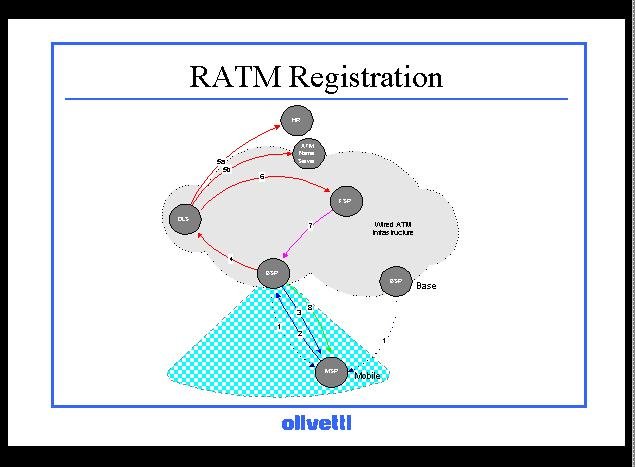 |

|

|

|

|
 |

|

|

|

|
This slide shows the management entities involved in the system and illustrates registration of a mobile within a domain.
The diagram shows an ATM mesh cloud with two base-stations and one mobile.
When a mobile first arrives in a domain, or is first powered up, it cycles through the available RF channels listening for transmissions from a base-station. The base-station is guaranteed to transmit within a small number of cells due to the MAC protocol.
After a mobile has been detected, a base transmits a meta-signaling request identifying itself and requests registration. The request is transmitted on a broadcast VP and VC and the base replies with a VPI which the mobile will use for all future communication.
The base then contacts the DLS using RPC and the DLS allocates the MR. A switch is chosen through which all VCs will be routed to the mobile and a proxy ATM address is chosen for the mobile to route these VCs.
Next the DLS contacts the Home Register for the mobile indicating the new proxy ATM address. The HR authenticates the mobile and informs the name serving system that the mobile in available via the new ATM address.
A virtual path is now established between the FSP and base to support all VCs for the mobile. A handover VC is also created between the FSP and the base and the base and mobile. This is used for handover control signaling.
The diagram illustrates the three extra forms of communication other than standard ATM-forum signaling
meta-signaling - when the mobile does not have a signaling channel
handover-signaling - used between FSP and base on dedicated VCs
CORBA based rpc used for higher level management and control